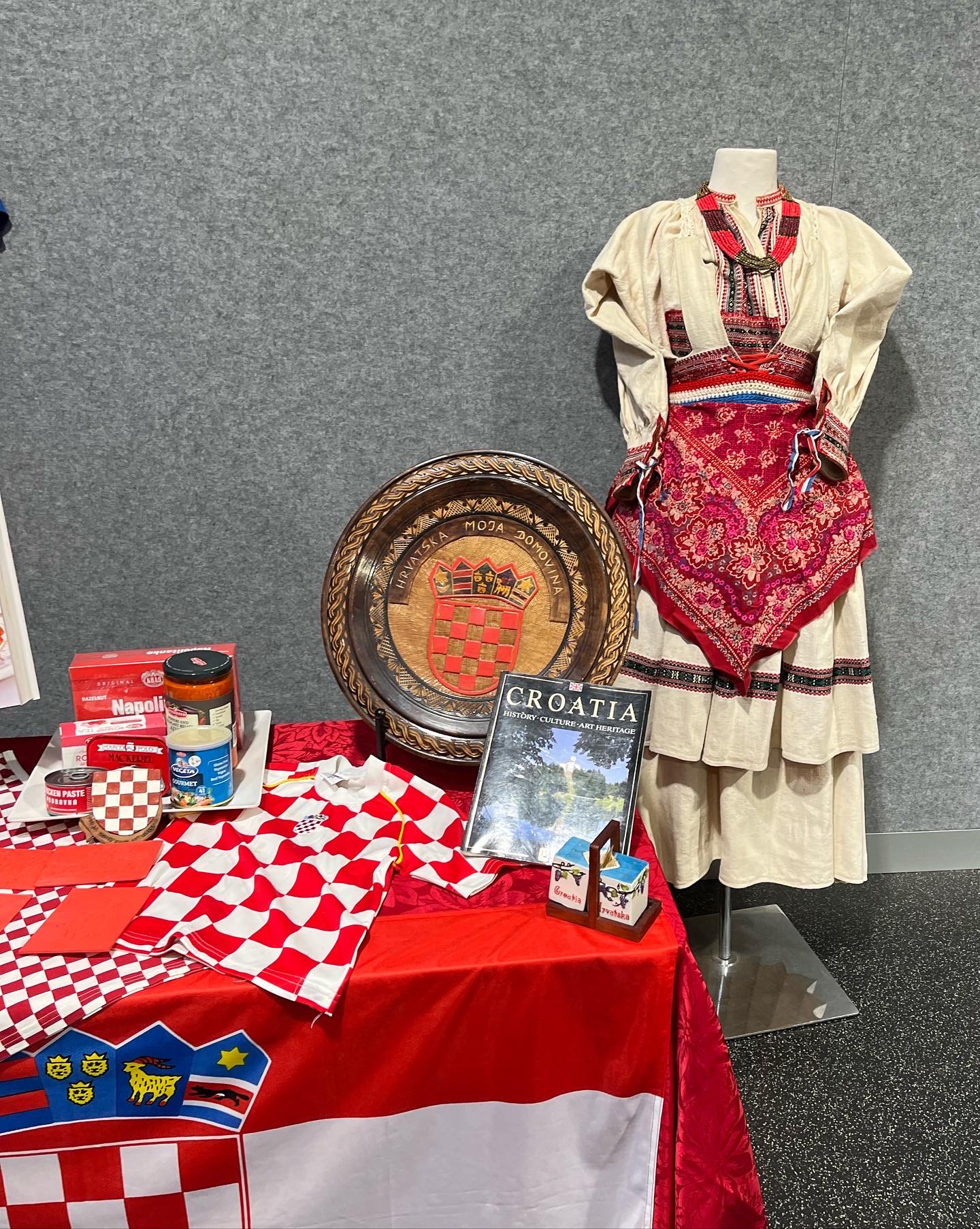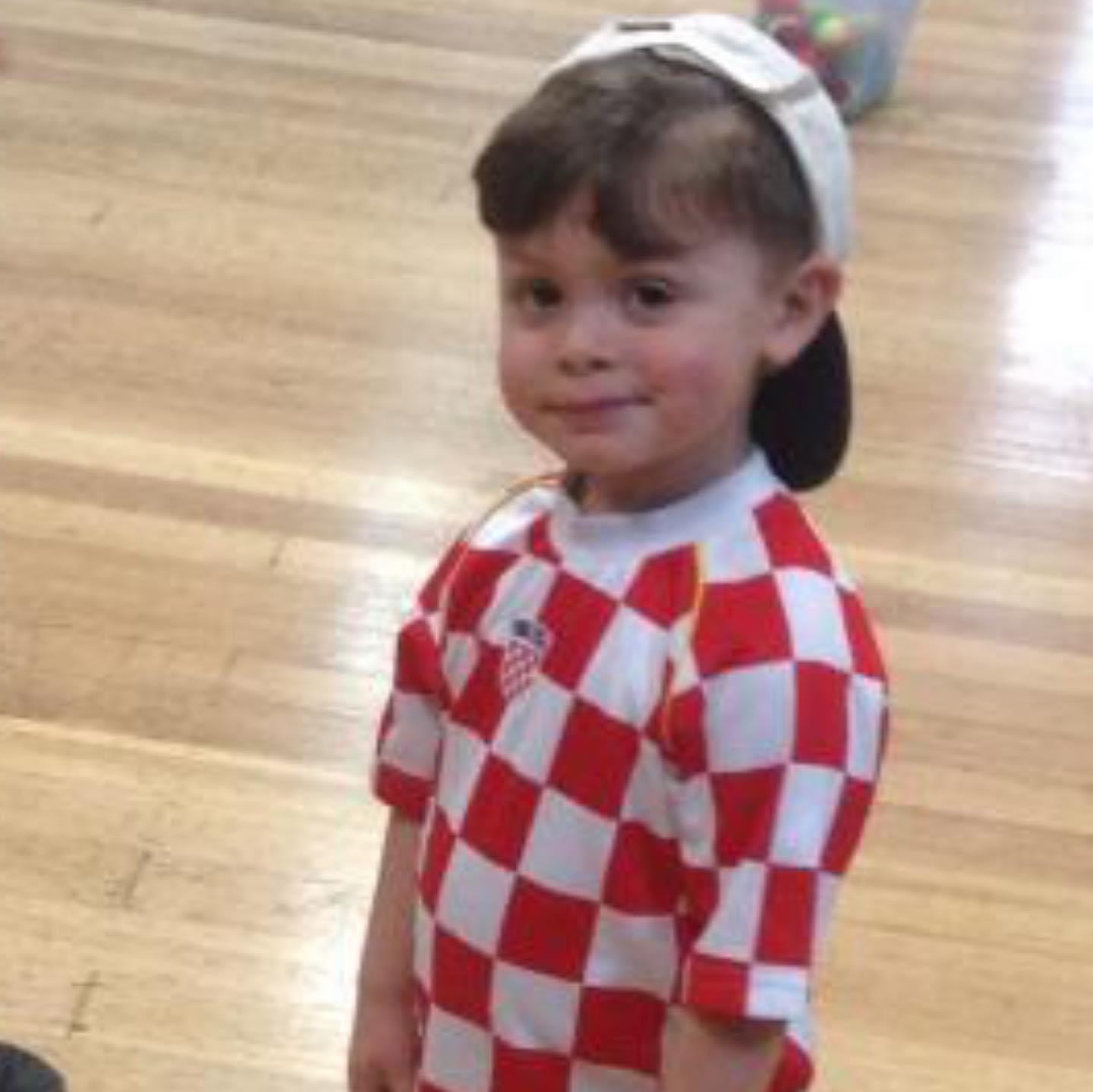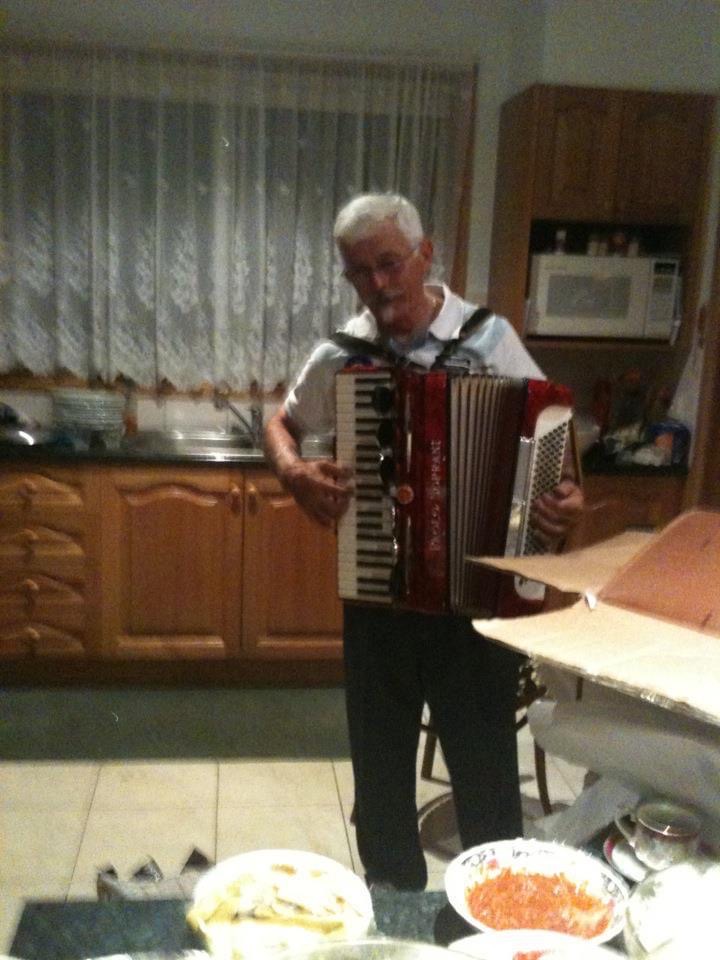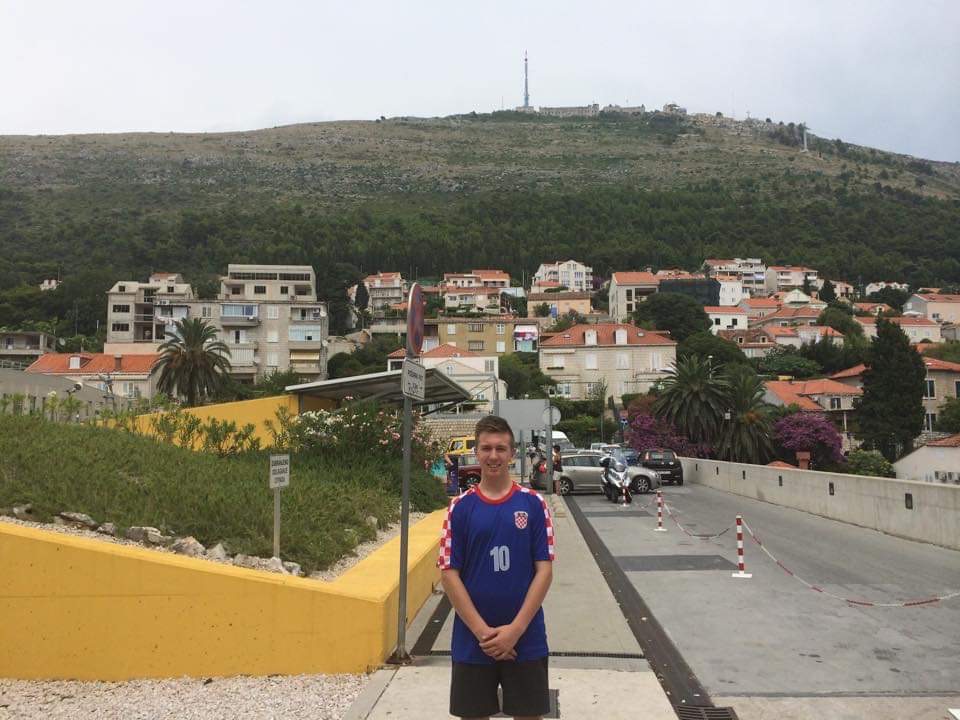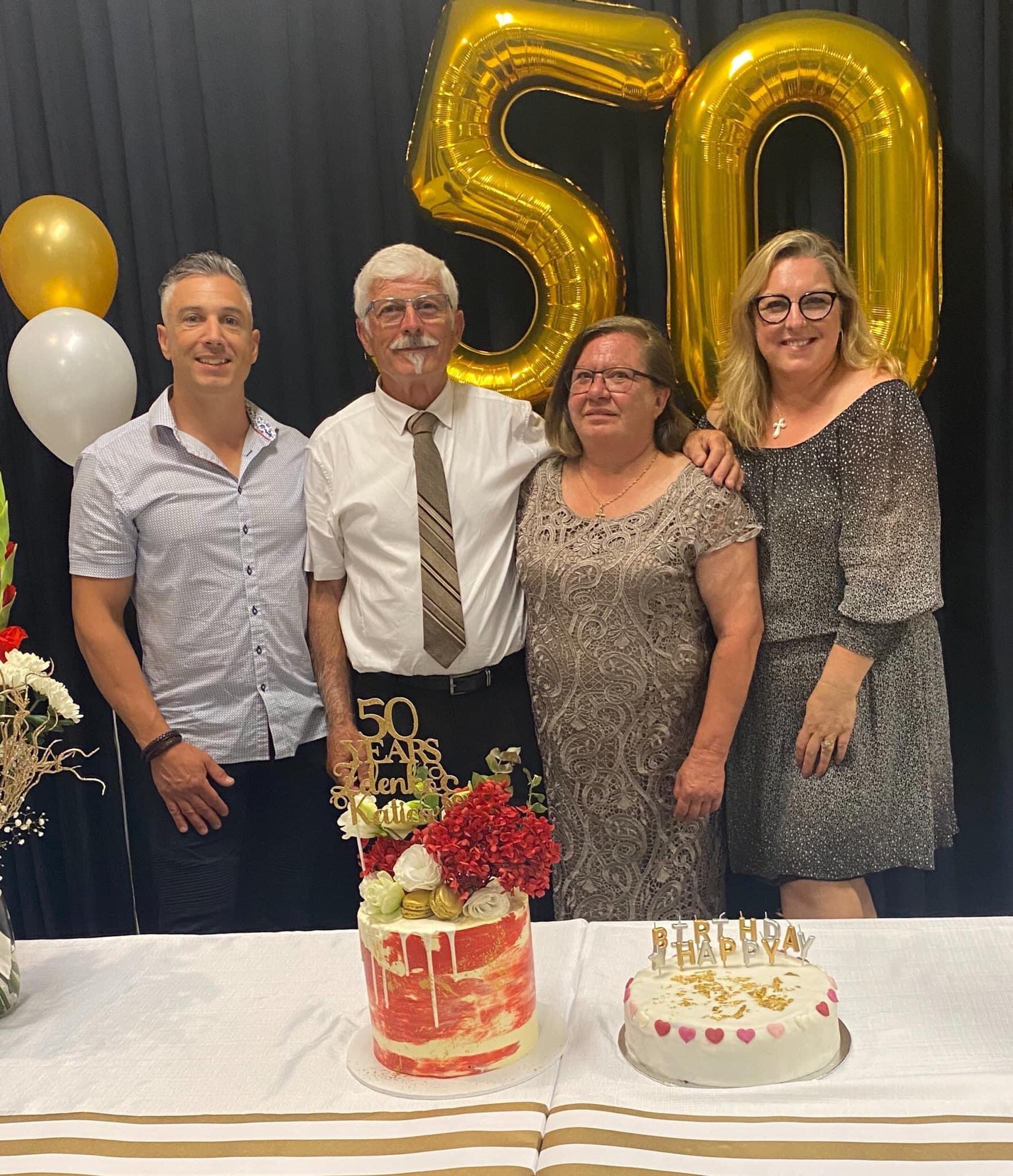My home in Croatia: A Portrait of Frano Donjerković, an Artist from Korčula
January 2, 2023 - The TCN inbox is full of surprises. Not all, but many of them are good. To start the new year off right, let us share a recent one that came in all the way from Australia. A Portrait of Frano Donjerković, an Artist from Blato, Korčula.
The nostalgic, warm, ultimately feel-good read was sent to us by the author of the text originally published in Melbourne in Hrvatski Vjesnik (Croatian Herald), the largest circulating Croatian language (with English insert) weekly newspaper in the global Croatian diaspora. It runs about 7,000 copies and has a digital presence, too, including Facebook. The story features Frano Donjerković, a Croatian Australian living in Melbourne. Read on to feel like you want to return to your home in Croatia, even if it was never there.
The oasis of islands on the Croatian coast has been called “extreme magic,” an awake dream by Truman Capote.
Frano Donjerković left his village of Blato, on Korčula at the doughty and courageous age of 27, in search of a better life in freedom and economic prosperity, reaching the shores of Australia in 1986. Leaving his home, family and community was a painful and sorrowful experience, and the memories of his youth, family and place have followed him all his life in Australia. Croatia has always been his home as he built a new life in Australia. He lives and works in Melbourne, married to Marien with a daughter Daniela and son Anthony.
Korčula is a magnificent island of artificers, stone masons, wood masters, smiths, shipwrights, sculptors and farmers, wine and olive oil masters and fishermen. Above all else, they are sailors; everyone can sail a boat, but on Blato most can turn to and make one. Korčula also has one of the best water polo teams in the world and many Olympic players. Korčula played a significant role in shipbuilding and maritime affairs in the history of Croatia because of its strategic geographical location and industry of its population. The great sea powers of Europe wanted to control the narrow channel between Korčula and the Pelješac peninsula, especially on the route between Dubrovnik and Venice.
Blato was once the largest village in the country, boasting more than 12,000 residents in the mid-1920s after an economic boom. Frano Donjerković also recalls vivid stories of hardship and departure from his childhood. He remembers an event that affected Blato significantly, that in one afternoon in the early post-war period 1,200 residents left in search of a better life. Blato’s population today is significantly lower and there are an estimated three-time more people from Blato throughout the world, many in Australia.
There are many things in Frano's life that are typical of the immigrant experience, from the pursuit of freedom and economic property, to raising a family in a place where everything seems foreign and unintelligible in a completely new language and idioms of speech and cultural habits. That has not stopped Frano Donjerković from being a valued, engaged, and leading member of the Croatian community and his broader Australian community. He is President of the Croatian Social Club Zlinje/Blato, a local Melbourne community organisation that nurtures the culture and identity of people from Zlinje and Blato, which marked its thirtieth anniversary in 2021. His passion for fishing and recreational boating brought him into the Hobson Bay Sport and Game Fishing Club, where today he serves as vice president.
Korčula is famous for many things, and today it thrives as a haven for tourists. It is known as the Marco Polo Isle, the birthplace of that intrepid traveller and prolific storyteller. Frano’s journey took him further south on the other side of the world to Australia, where he tells the stories of his home, family, and community through artistic renditions of miniature boats, ships, and buildings, all from memory.
Korčula is one of the largest islands on the Adriatic surrounded by a crystal limpid water in the glittering arc of Canaletto-blue sea. It is a beautiful and verdant island, and life can be traced back tens of thousands of years. Its statute or governing constitution was enacted in 1214 and defines limits to power through a popular assembly, and spells out the roles of dukes, the grand council, small council, curia, and ensures the provision of utility services and sanitation. The statute is a “unique normative crossword puzzle” of medieval institutions, special freedoms, and layered jurisdictions, representing a genuine constitution. It predates the Statute of Dubrovnik (1272) and the Statute of the Principality of Poljica (1440), two republican poleis serving as pinpricks of freedom in the Adriatic.
Strabo, that intrepid travel writer born in 64 B.C., was the first to distinguish Korčula from Corfu: both were named Korkyra in ancient Greece. Strabo added “Melania” (“dark black”) and coined Korkyra Melaina to denote Korčula because it was so densely wooded. Korčula has been described as glorious and enchanting, one of the isles on which many would welcome shipwreck, but that would not last long because of its proximity to the mainland and its strategic location along the bridges of islands that croisette southern Croatia’s coast. The name Blato is literally “Mud,” a name taken after the fertile plains that link the village to the Vela Luka (the Grand Port). The literal translation is not accurate, however, and “blato” in early Croatian refers to a large body of water. The village received its name from a lake that existed in the valley between the village and port Vele Luka. This lake was drained in the early twentieth century by a four-kilometre tunnel to drain the water into the sea. The village shimmers in the iridescent light of its fortified stone structures and narrow lanes. The linden tree alley “Zlinje” was planted and stretches from one side of the village to the other. It partitions Blato into two and is all but impenetrable, with the additional marquis of arbutus, sage, lavender and rosemary, whose combined heady scents dazzle. All these, plus pine, cypress, and holm oak, which has been used by local shipwrights for a millennium, make Korčula one of the most aromatic and thickly vegetated villages in the Adriatic.
Frano Donjerković and his recreations
Frano’s creations are a freeze-frame of a time and experience lodged in his memory. His home in Blato was the third house built in the village, and its one,-metre-thick walls have not changed much since the first stone was laid. Frano has been creating his boats, houses, and other artifacts about 30 years ago in his studio that also poses as a garage. He works exclusively from memory, and doesn't use plans, sketches, or photographs. All the images are in his mind, etched into his experience and memory of childhood growing up in the enchanting, industrious, and idyllic village of Blato.
Frano has exhibited twice at the Joel Gallery. In 2022 his exhibition was called “My Home in Croatia,” and in 2018, “Creations.” He has also displayed his creations at Croatian community centres in the past and plans to do more in the future. Photo courtesy of Louis Joel Arts & Community Centre
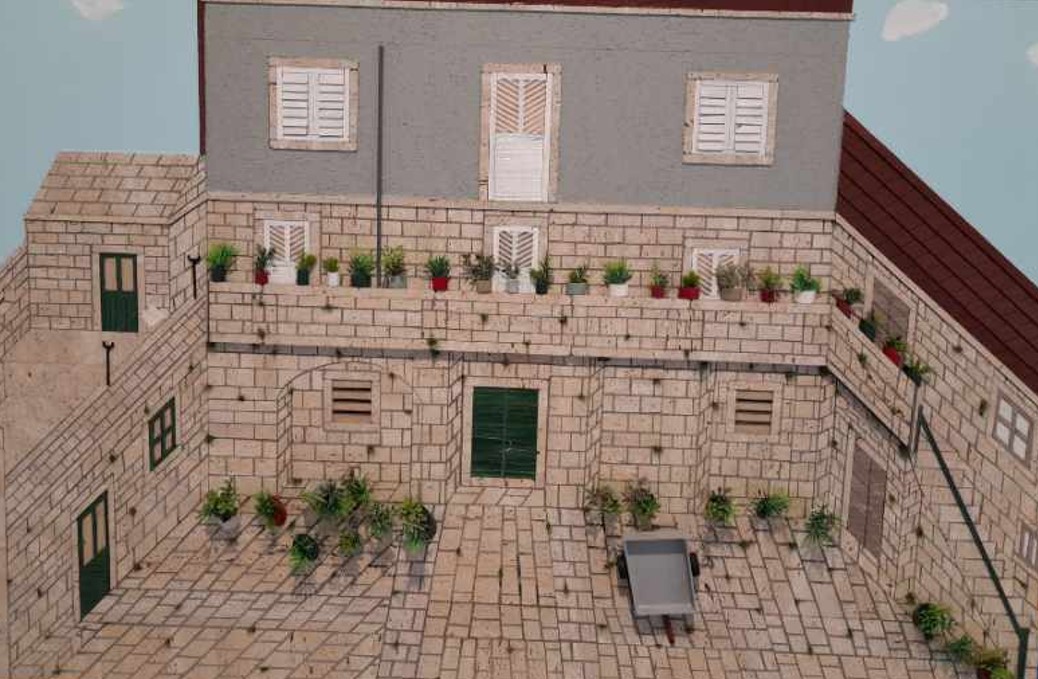
Frano’s family home held by generations since it was founded. As the third house built in Blato since the village was founded, with one-meter-thick walls, it has withstood the vastitudes of time and calamities of centuries.

Frano Donjerković remembers the soothing and inviting sound of church bells in Blato. The bell tower was built in the eighteenth century, and its loopholes in the walls suggest that it was also used for defensive purposes. The parish church is situated with a spacious loggia or square. The Our Lady of the Field church has Roman floors that place its beginnings in the fourth century. The remnants of a Roman agricultural estate (Junianum) and other artifacts dating back prehistoric and Illyrian times.
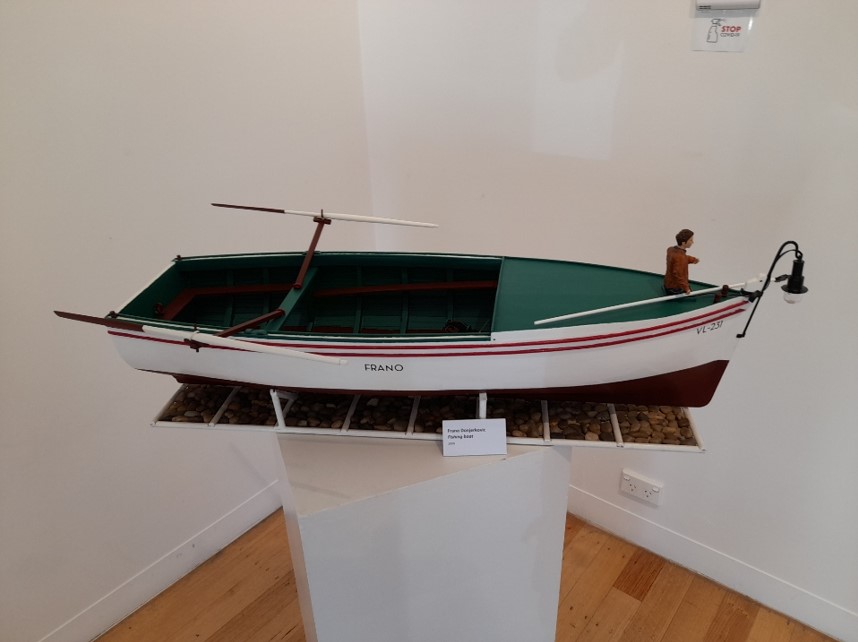
Fishing schooners, boats and ships of cargo are etched in Frano’s memory. The boats are named after family members. The biggest boat took him a year to craft.
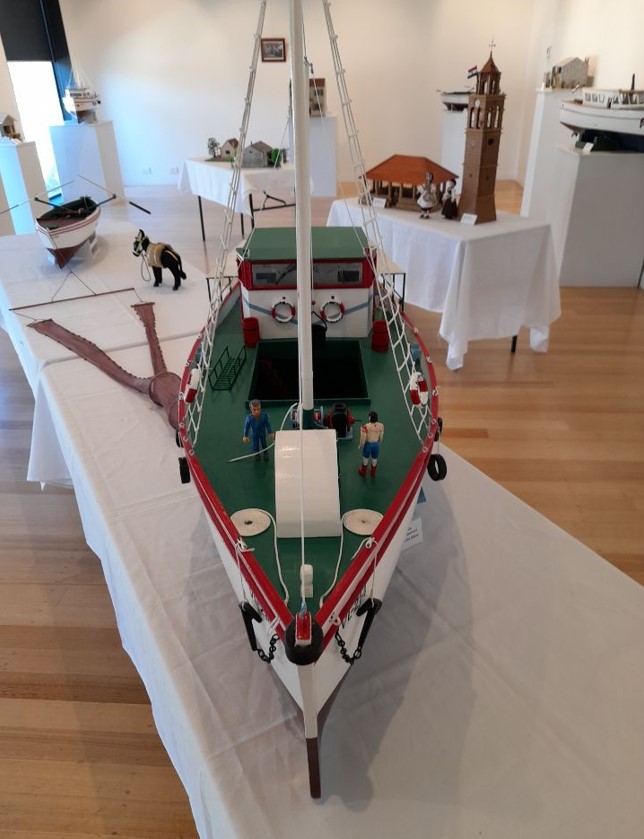
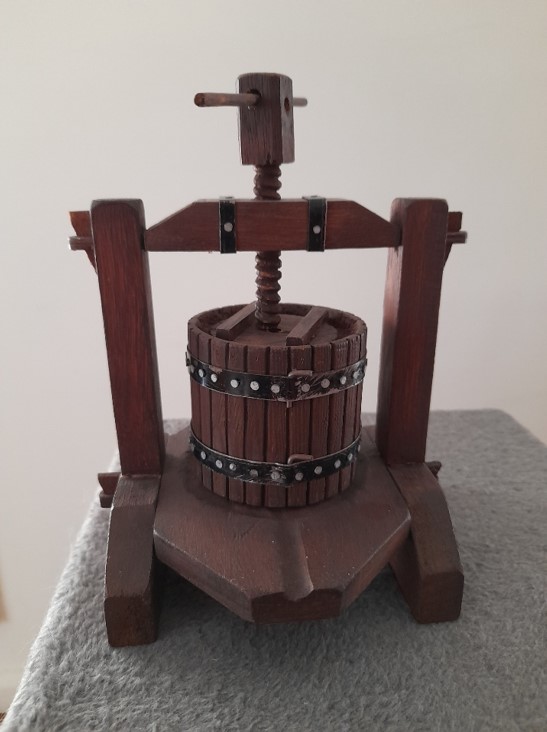
Frano’s family are also masters of winemaking. The first piece of creativity inspired by memories of his home in Croatia is the wine press that his grandfather acquired. This was Frano’s first creation from memory.
Kumpanija: the sword dance of heroes and romantics
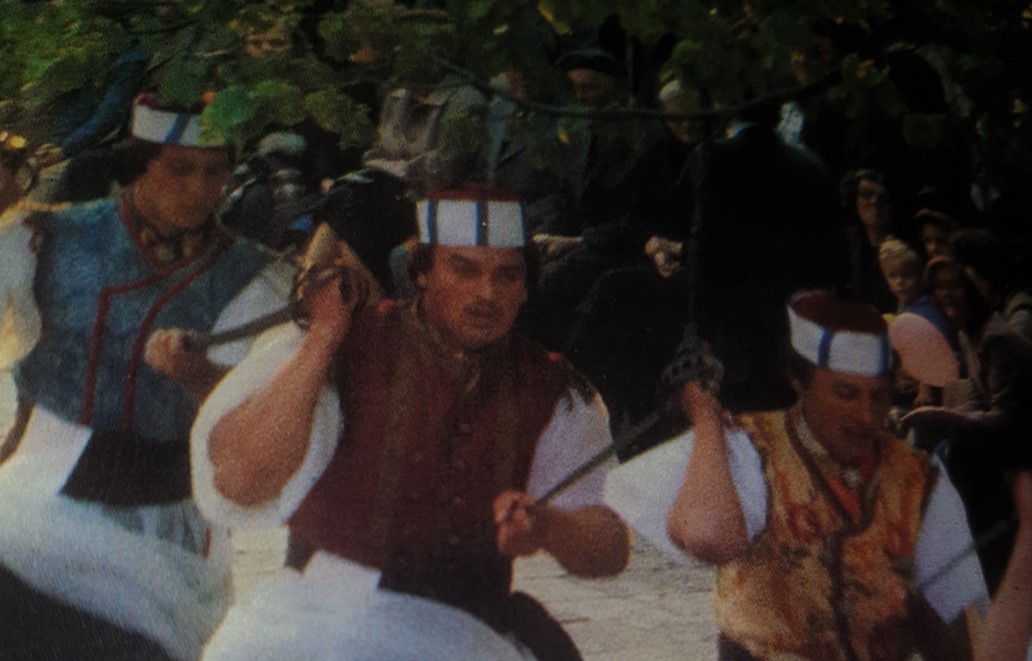
Frano Donjerković performing the “Kumpanija,” a traditional sword dance celebrated in Blato and Vele Luka. As a young man, Frano joined the Knights’ Society Kumpanija (Companions), established as an ensemble in 1927, and is the pride of Blato. The ensemble keeps traditional dances and customs representing a chivalrous confrontation between two armies, with highlights of a sword dance that is accompanied with a menacing drum and harrowing bagpipe. The dance “Kumpanija” or “sword dance” celebrates the success of local armed formations to protect the village and port from pirates and would-be conquerors, which did not have traditional defensive fortifications or walls like many other coastal cities in Croatia’s coastal waters. The dance is wrought with intensity with high-impact sword duels. The “Kumpanija” dancers must have considerable agility, talent, and stamina.
The knights are divided into classes; (barjaktar, captain, kapural, srzetin, buzdonahar) and different parts of the dance (spuz, mostra, tanac, etc). Apart from the sparks flying from the swords, a particularly attractive role is demonstrated by the “alfir” (flag-bearer) and his large Croatian standard, which ends with a dance with the local ladies, called the “tanac.” The sword dance “Kumpanija” takes place in the square (plokata) in front of the Church of All Saints. The main performance takes place on 28 April every year to mark the Day of Blato, which is also the Feast of Saint Vincenca, and on 15 August, feast of the Assumption of the Blessed Virgin Mary. The “Kumpanija” also frequently performs across Croatia and Europe and can be seen during the height of the tourist season as a regular attraction.
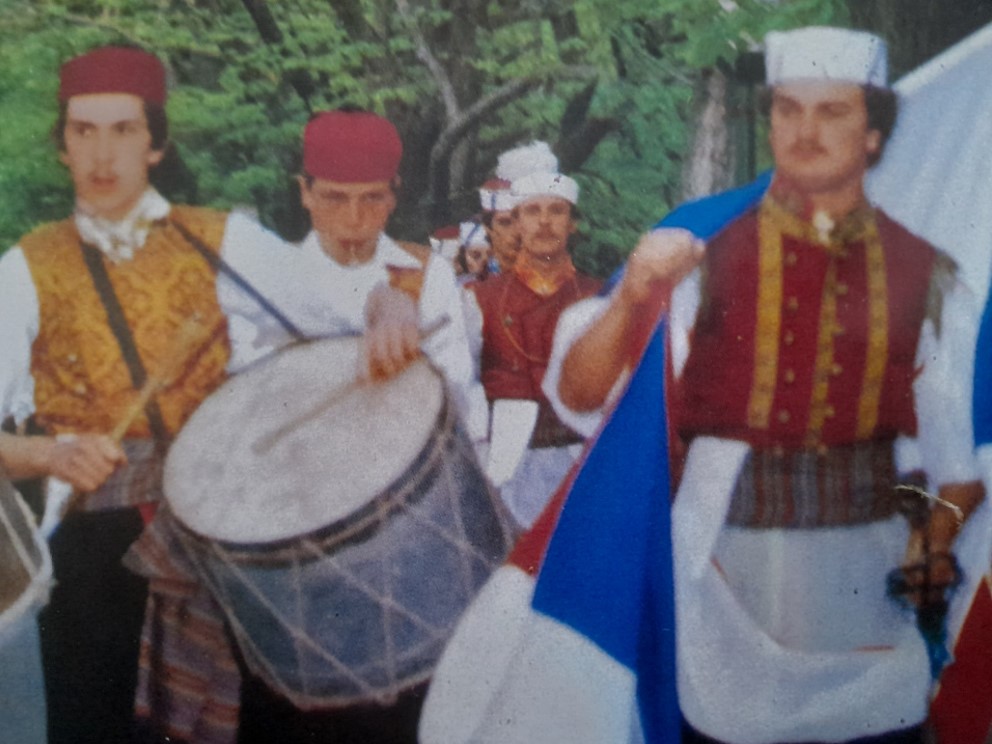
Stand Here, Captain! | By Mirjana Mrkela (story) and Niko Barun (illustrations) |
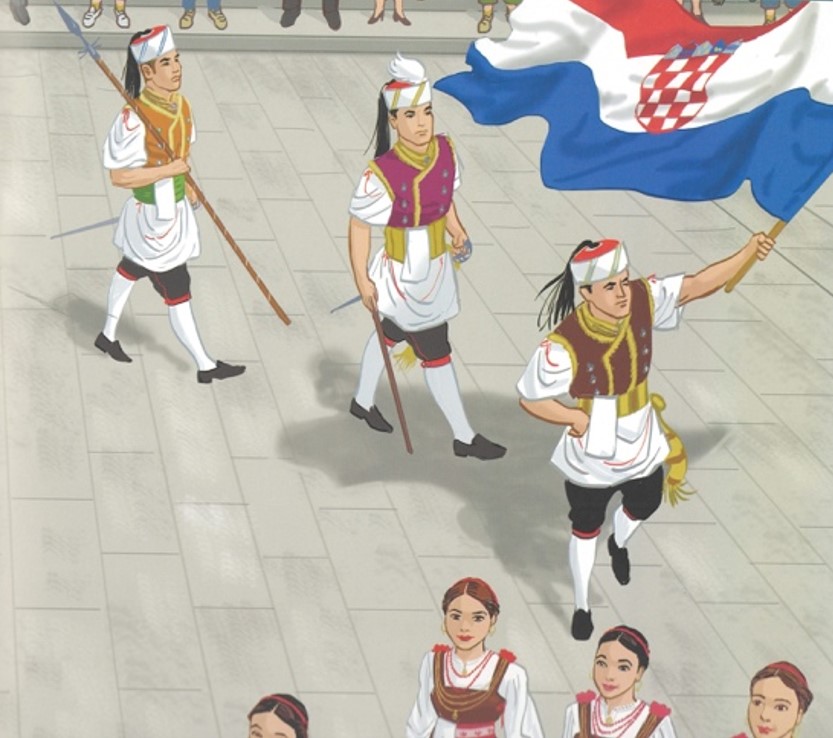 | The Blato Public Library and Knights’ Society Kumpanija, Blato in 2019 published a book on the sword dance by Mirjana Mrkela (story) and Niko Barun (illustrations). The book was published in both Croatian and English, with considerable detail on the story of each stage of the dance, including 36 beautifully illustrated pages under the title “Stand Here Captain! Information about acquiring the illustrated book can be obtained by writing to This email address is being protected from spambots. You need JavaScript enabled to view it.. |
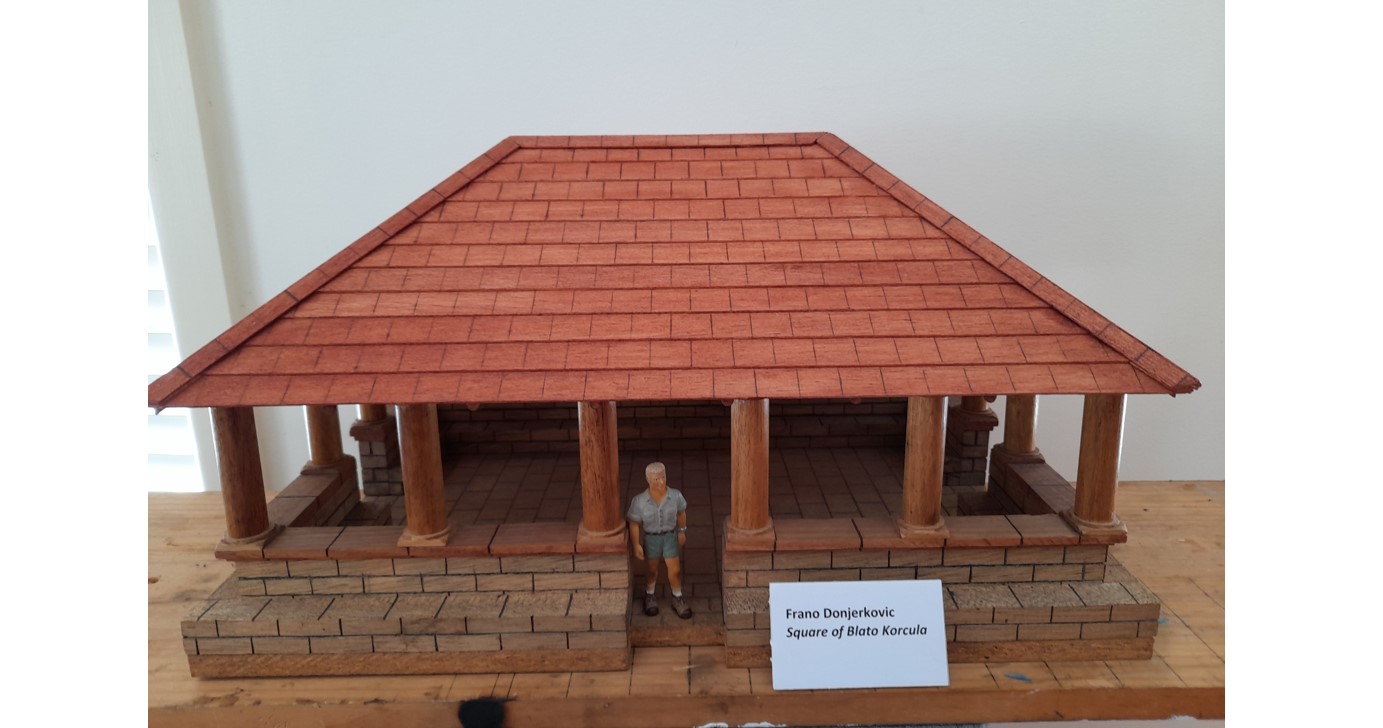
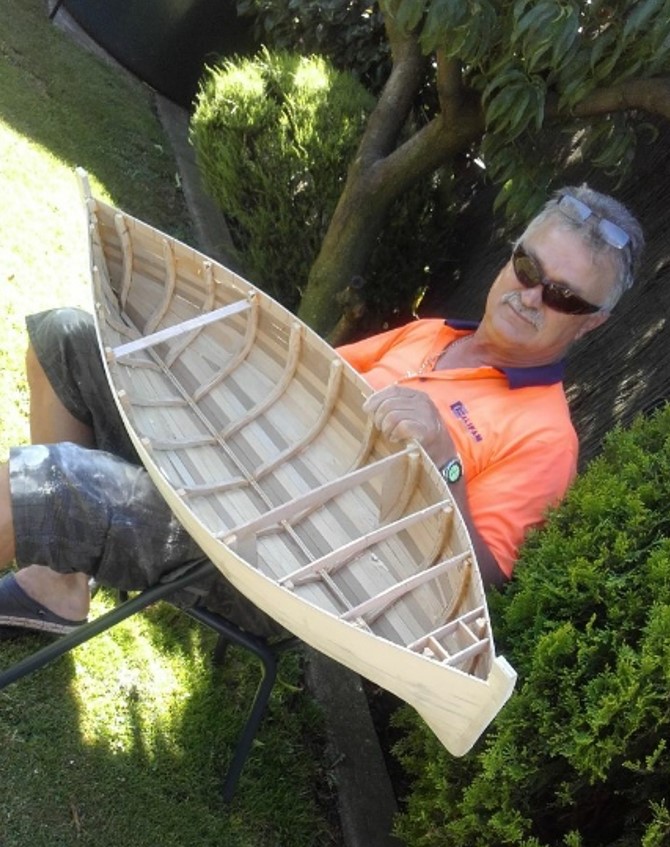
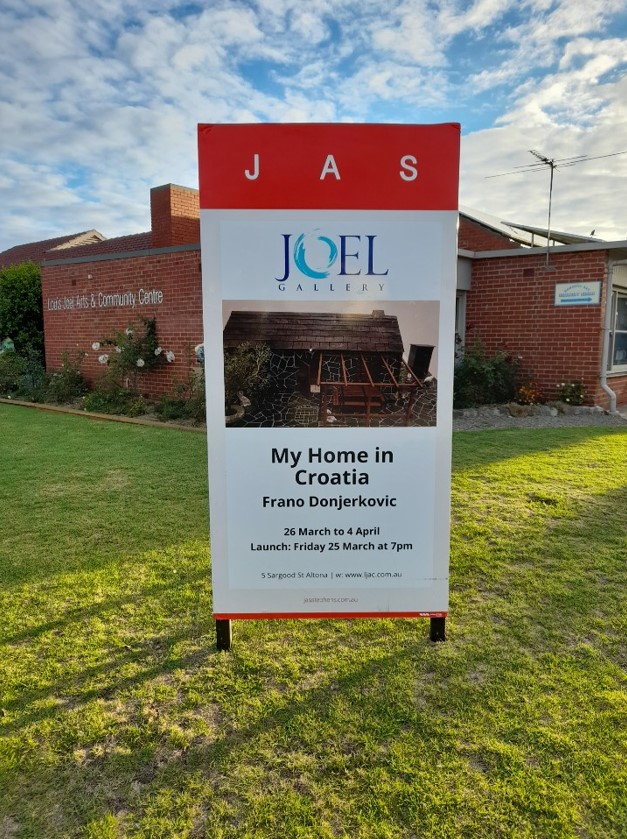
For more, make sure to check out our dedicated Croatian Diaspora section.
Australian-Croatian Boy Wins School Project with Croatia Presentation
July 2, 2022 - An 11-year-old Australian-Croatian boy won first place in a Travel Expo school project by presenting Croatian history, culture, traditions, and folklore to his teachers and classmates. TCN had the privilege to talk with his mother, Irena, about their Croatian ancestry.
Arkie Kokoris, an 11-year-old boy from Melbourne, Australia, won first place in a Travel Expo school project, which consisted of presenting information about a country, where he and his 2 colleagues chose Croatia due to his families ties. They were tasked with presenting a Travel Expo stand, encouraging people to visit their chosen country, and were asked to provide information on the natural attractions, climate, tourist destinations, cuisine, culture, history, wildlife, and more.
Arkie's presentation included local products, flags, shirts, traditional costumes, and more. (Photo: Irena Kokoris)
Arkie attends a private Christian school and he’s currently in year six. He included some fact sheets about Croatia and a hand-drawn map which they placed on the wall and a slideshow presentation on interesting facts and the history and culture of Croatia. They included historical buildings and landmarks, nature parks, food, and animals. For the visual display, they included the flag, various souvenirs from Croatia, traditional food items, some sporting memorabilia including a soccer jersey from Dinamo, an authentic Croatian costume from Zagreb, a cookbook, and another book on famous landmarks and buildings in Croatia. One of the students has a 3D printer and made lithographs of famous buildings which would be placed in front of a torch to show the image.
A smaller Arkie with a Croatian football shirt. (Photo: Irena Kokoris)
His presentation obtained first place after a voting process, and a humble first prize of a certificate and a round of applause followed. His fellow classmates had to vote on their favourite display and Croatia won by a landslide.
Total Croatia News interviewed his mother, Irena Kokoris, who, in addition to being great support of her son in the process of designing and executing the project, proudly shared the achievement on social media. Irena’s heritage story is, perhaps, one of the most interesting and touching I’ve read, and I’m really glad that you can learn from it through her own words.
My parents are from the region of Zumberak, Karlovac. They grew up on farms, tending to animals and the land as well as attending school and doing their homework by candlelight. They left in 1971 for Australia as a young and newly married couple, hoping to start a new life together with opportunities for their future children. Upon arrival, they were met by only one relative.
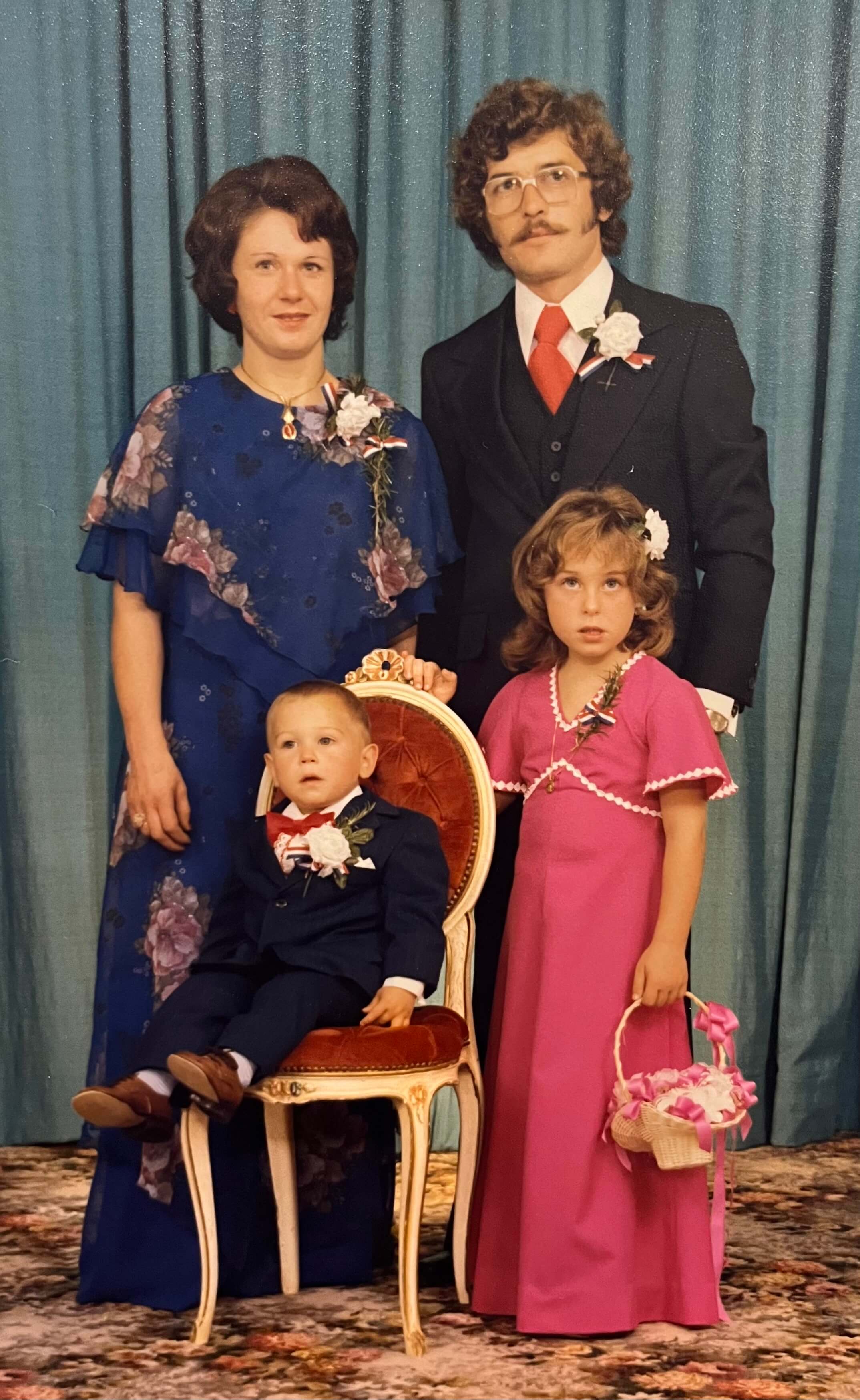
Irena with her father Zdenko Rados, her mother Katica Rados, and her younger brother, Marko. (Family album)
They spent some time in an immigration camp before finding rental accommodation and finding work. They both worked full-time jobs their whole working lives, as well as raising 2 children. They have 6 grandchildren. My father passed away suddenly last year at the age of 69 leaving a large hole in our family. My mother made sure to include the grb on his gravestone, he was a very proud Croat.
Irena's father, Zdenko. (Family album)
What kind of Croatian traditions and customs did you have at home when growing up? Were there Croatian recipes and food as well?
We always celebrated the Catholic holidays with the family, having a pig cooked on the spit, lots of sides, and lots of beer and wine. My parents had many family and friends of Croatian heritage and we always had some kind of gathering to attend on the weekends. Dinner dances, weddings, holy communion or confirmation, birthdays, etc. Mum taught me how to make sarma, gulas, cevapi, kiseli kupus, as well as many other traditional foods. There would be sunka, slanina, kobasice, wine, and sometimes rakija as the seasons allowed.
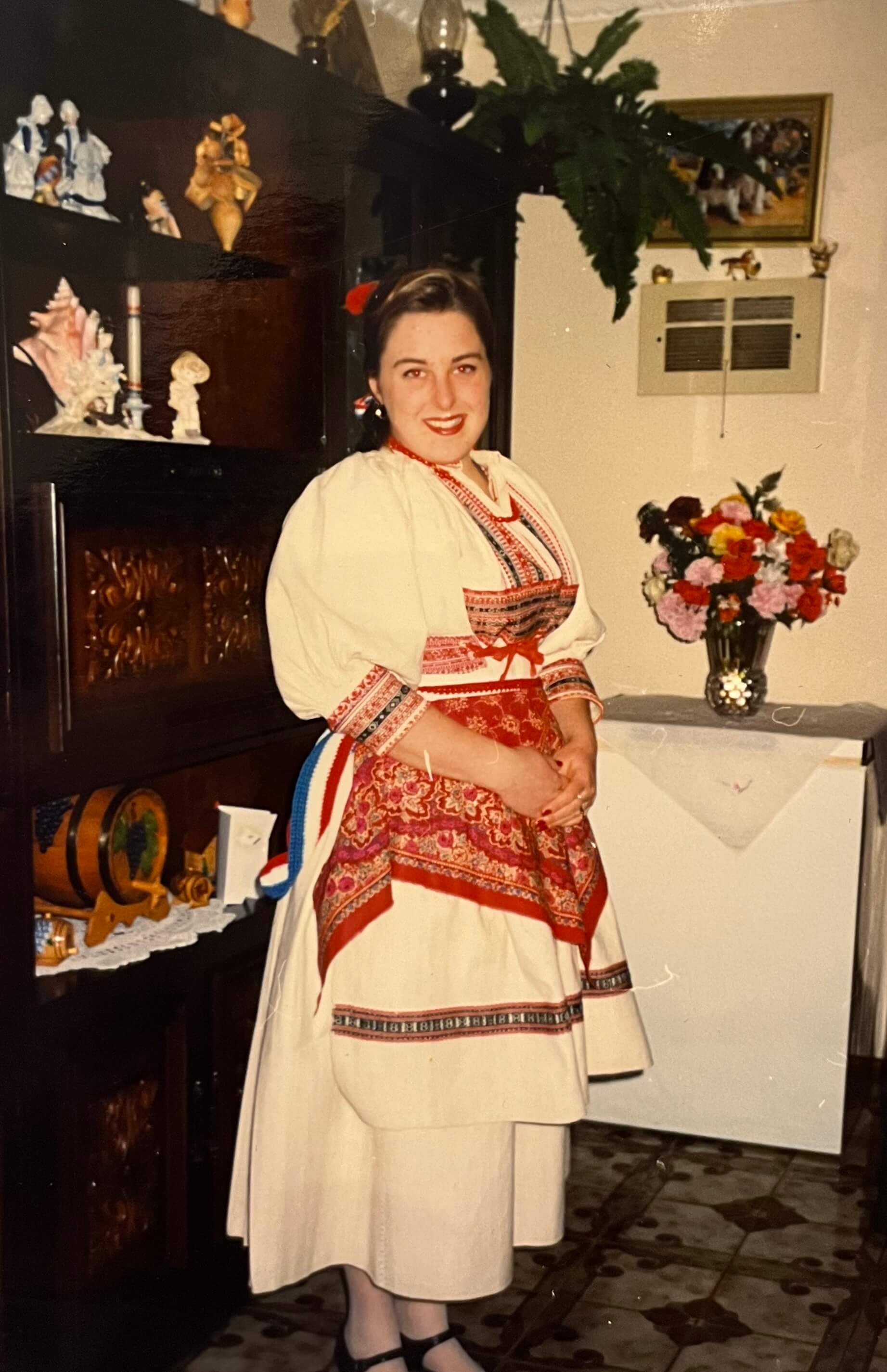
Irena with a Croatian traditional costume. (Family album)
Was there a Croatian community where you grew up? Have you been a part of it? How?
We’re a part of the Hrvatsko Vinarsko Drustvo, Mladi Hrvati Folklore, the Croatian Golf Club, Croatian Saturday School, our church was Sv Nikola Tavelic, and there were many dinner dances organised by the church as well as New Years Eve parties. I danced for many years, into my early 20s, my brother also attended for a few years. Being part of the dancing group, attending many events was some of the happiest memories of my teenage years. One year (around 1990), a large group of Croatian singers and the President of Croatia Stipe Mesic visited the Melbourne Knights soccer club and we sang the Australian National Anthem and danced for them.
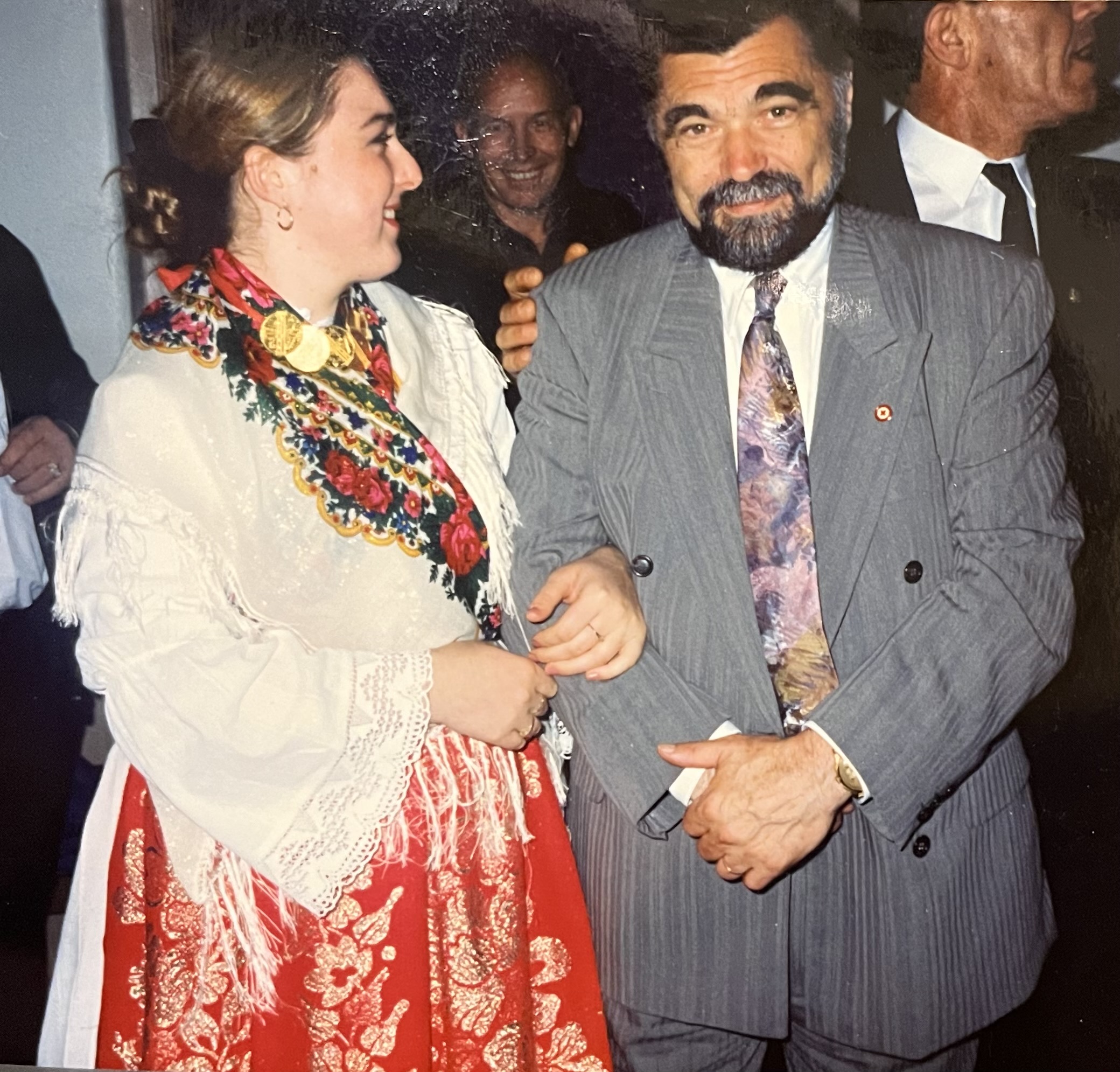
Irena with former Croatian president, Stjepan Mesic. (Family album)
Have you visited Croatia? What was your impression?
Visited in 1985 as a teenager, spent most of the time in the village, but travelled to Slovenia, Rijeka, Zagreb and Karlovac. Visited Plitvice and a few other locations. Spent a lot of time in the forest and on the farm. Picked cherries from the fields and mushrooms from the forest. My parents went back to Croatia in 2014 and took my oldest son Arthur with them for 6 weeks.
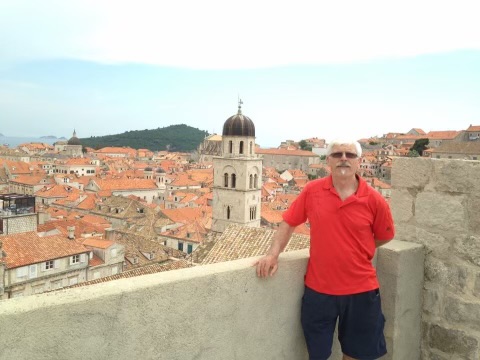
Irena's father Zdenko in 2014 trip to Dubrovnik. (Family album)
They travelled more extensively that time and saw more sights, including Dubrovnik and Split and my son really enjoyed his time there. My dream is to return for a visit and bring my family to see the country of their mother’s heritage. Croatia is such a beautiful country and I feel strong ties. We were planning to go in 2021, but the pandemic changed our plans! My children are old enough now to travel and it is definitely on my bucket list!
Irena's older son, Arthur, went to visit Croatia with his grandparents. (Family album)
What makes your connection to Croatia so strong and special? What is it that you like the most about your Croatian heritage?
Growing up hearing my parents talk about their homeland with such fondness (apart from the hardship). They were mindful to pass on their love and pride in their country to us. We attended Croatian school on Saturdays for many years, learning history, geography and language. I remember our teacher didn’t know any English, so we had to speak Croatian the whole time! Having visited there in 1985 as a young girl, I have such fond memories and loved the land and the carefree attitude of its people.
The Rados family during the 50th year of marriage celebration between Zdenko and Katica. (Family album)
I love that I am of Croatian heritage, I am proud of it and proud that I had the opportunity to participate in the Australian Croatian community for many years in my life. After I married, I became less involved and moved into becoming a mother and wife – of which I am also very proud.
In which ways do you try to teach your children to embrace their Croatian heritage?
I always remind them that despite their surname – they are half Croatian! They have all shown an interest at some stage in learning the language and have picked up a little over the years. They love all the Croatian cuisine – especially the kolace! I involve them in learning some recipes such as punjene paprike, cevapi and raznjici. We have attended a few dinner dances over the years and I think my older two may attend Croktoberfest this year!
Irena's children are of both Greek and Croatian descent. (Family album)
What’s your favorite thing about Croatia?
My favourite thing has got to be the culture around folklore dancing! I think it is beautiful, elegant and regal. The costumes are divine and the music is amazing. I miss dancing so much but am so glad I was a part of it for so long.

Irena dancing with a friend. (Family album)
Thank you Irena for sharing your story with us!
For more news about the Croatian diaspora, visit our dedicated section.


